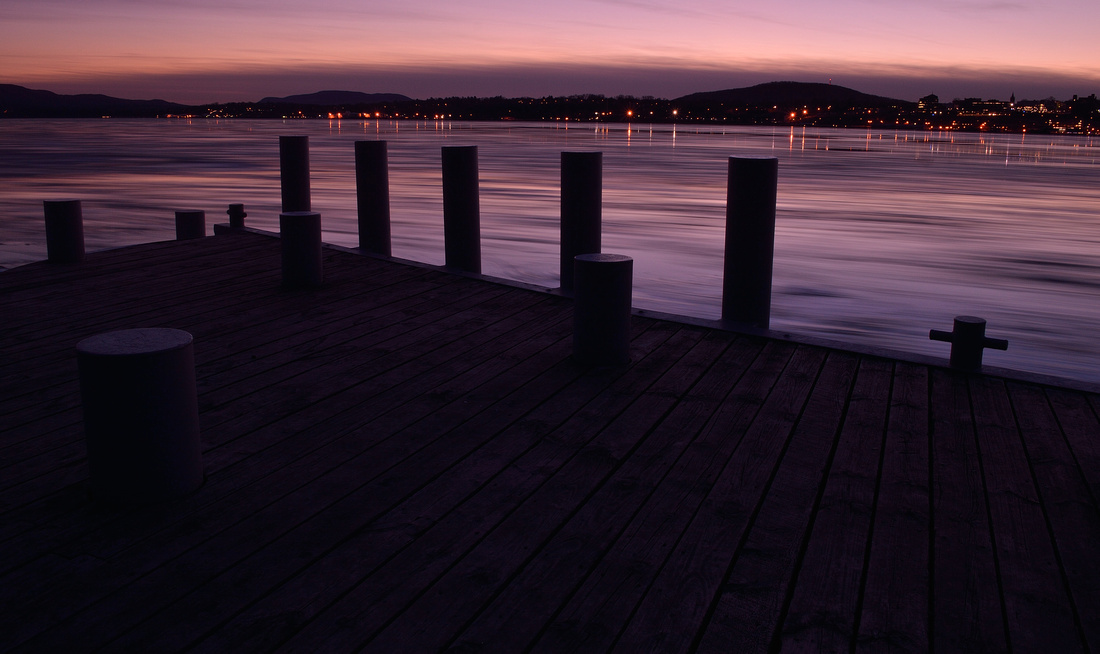1,000 Words


One of my favorite shots of this winter season is a scene of a thawing Hudson River, just as the very last rays of the sun slip behind a horizon filled with distant mountains and gently sloping hills dotted with historic riverside dwellings and bold architecture. Taken at Long Dock Park in Beacon, NY, one of the most heavily visited acquisitions of the environmental organization, Scenic Hudson, the site is one of the best spots to engage in Hudson River photography anywhere in the region. Apart from the stunning features of the park, visitors are allowed to remain past sunset, unlike most of the surrounding state parks that have strict policies that prohibit lingering for even a moment after dark. This generous laxity on the part of Scenic Hudson ensures the mesmerizing sunsets and idyllic twilight scenes are adequately captured.
In the foreground of the image is the "dock" that lends the park its name. Upon acquiring the property, Scenic Hudson renovated the once derelict pier, transforming it into not only a work of art, imbued with wonderful symmetry and modern refinement, but giving it a more utilitarian use that harkens back to a time when the structure played a prominent role in the town's industrial past. Not visible in the image is a canal-like kayak launch that diagonally bisects the pier.
The lights seen on the opposite shore of the Hudson belong to the town of New Windsor and the city of Newburgh. On the hill to the right, the one with the outline of tall buildings piercing the sky, George Washington was once stationed for over a year towards the end of the American Revolution. His headquarters were located on the brow of the once significantly less crowded hill. From here, he could gaze uninterruptedly to the soft shores of where I now stood and then peer beyond to the rugged Hudson Highlands at my back. Both the picturesque and sublime—a consummate and rare combination—often intermingle along these shores, and is what lent such inspiration to artists of the Hudson River School, a group that made capturing scenic landscapes a prominent and respected art form.
The water of the estuarine Hudson is imbued with a silky texture from the moderate ice floes sweeping north as the tide rushes in. Taken during an early February thaw, most chunks of ice were little bigger than the size of a tire and were most densely clustered towards the pier and eastern shore. Dark, highly reflective ice-free zones can be seen toward the center of the river. A long exposure time resulted in a complete blur of the ice, giving it pleasing twilight hues that are brighter and more varied than the colors of the sky. The angular ice magnifies and scatters the light. Its charms are most set off when it emulates liquid and flows, yet possesses a greater luster and radiates richer and more vibrant qualities than typically drab liquid water. Longer exposures mix the two forms and seemingly create a new, unique state of matter.
Camera: Nikon D7200
Camera Settings:
Mode: Manual
Exposure/shutter speed: 15 seconds
Aperture: f/16
ISO: 100
Format: RAW
To get the shot I used an 18-140 mm lens capped with a neutral density filter (Hoya NDX8) to reduce light intensity and ensure a total blurring of the ice without an overexposure of the image. On the pier I set up my tripod and began shooting in manual mode. I choose a standard aperture (f/16) and ISO (100) for landscapes. Due to the low light conditions and wanting to get the desired silky texture of the ice, I set the exposure time to 15 seconds (this would have been shorter if the sun was higher in the sky). And to allow for a fine degree of editing, I shot in RAW, which is my default setting.
In Photoshop, I altered the colors somewhat to reduce the prevalent deep azures and pale yellows to a less clashing color scheme by tinting the photo purple, thereby providing more pastel hues. The various altered shades, ranging from crisp violet to soft lilac is more in tune with the ideals of a charming twilight scene. While natural sunsets with similar color regimens to the finished image do occur like this here, on the night of my photo shoot, intensely vivid colors were lacking. Photographers, like all types of artists, are given a fair degree of artistic license to create the scene as they wish it to be and not as it actually is—thus is art.
Winter photography is often challenging. Dull monochromatic hues dominate a withered and subjugated landscape, with only the bare skeletal remains of the environment left to greet you. You are then therefore tasked to become creative. The team over at Light could be the solution to some of these challenges with their new camera technology. Its imaging engine allows for you to get beautifully-lit photos, even as the day's light begins to fade.